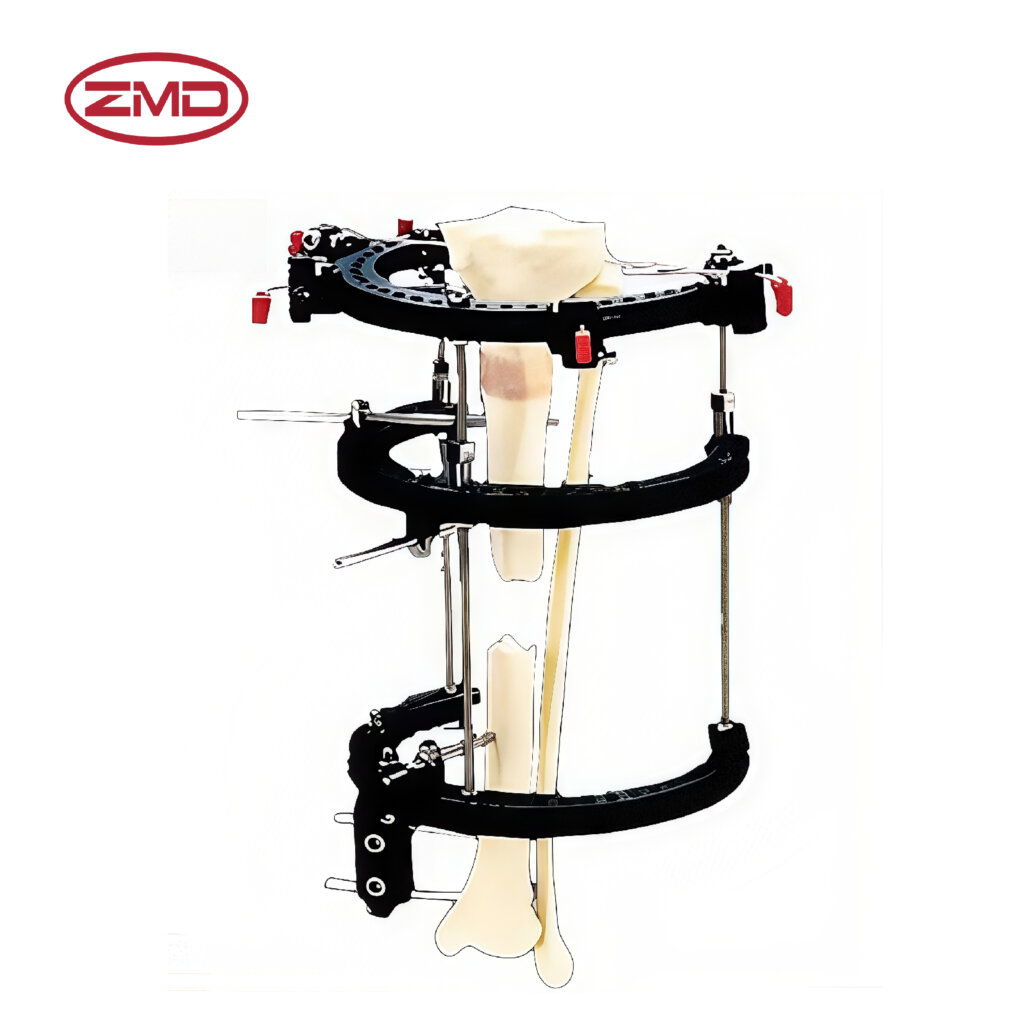
- Home
- About Us
- Products
- Trauma Internal Fixation System
- Spinal Internal Fixation System
- External Fixation
- Artificial Implants System
- Sports Medicine
- Power tools
- VSD System
- Instruments
- Medical supplies
- Blog
- Personnel Profile
- Contact Us
Phone line
| CODE | PRODUCTION | DESCRIPTION | MATERIAL |
| ZI110 | Pennig Dynamic Wrist Fixator-Double Ball-Joint | / | S.S |
A: It has a high degree of adjustability to fit different wrist sizes and injury conditions. It can be flexibly adjusted according to the size of the wrist and different injury situations such as fractures and sprains at various stages of healing, precisely controlling the range of motion and stability.
A: It is designed with comfort in mind, featuring padding and an ergonomic shape. The padding reduces friction and pressure points, conforms to the natural contours of the wrist, ensuring comfort even during extended wear and avoiding poor patient compliance due to discomfort
A: Yes, it can be adjusted for use on either wrist. Its design is versatile and can be accurately positioned and customized according to the injury situation of either the left or right wrist, providing appropriate support and range of motion
A: It depends on the specific injury and is advised by a healthcare professional. Different injuries such as fractures, ligament sprains, and arthritis have different healing times. The doctor will determine the wearing duration based on the type, severity, and recovery status of the injury
A: While it may limit extreme movements, it allows for basic daily activities. Gentle gripping, reaching, and other motions are possible, ensuring self-care in daily life. However, strenuous or high-impact activities need to be avoided or adjusted to prevent affecting the fixator and the healing process.
A: Some models have a certain degree of water resistance. Check the product specifications. The water resistance varies depending on the materials and design. It is recommended to protect it during bathing or washing hands to ensure its durability and function
A: It can only be removed temporarily under the guidance of a healthcare professional. For example, when cleaning the skin, during specific examinations, or for adjustments. But the removal process needs to be carefully managed to avoid affecting the healing and support.
A: By providing stability and proper alignment, it often helps reduce pain. It stabilizes the wrist and controls movement, reducing stress on the injured area such as bones and ligaments, relieving pain and promoting natural healing.
A: It is usually made of durable materials such as metal and plastic. The metal ensures structural strength to withstand external forces during normal use and provides reliable support. The plastic provides flexibility, ease of adjustment, and a more comfortable interface with the skin. The two work together to make the fixator durable and practical.
A: Yes, it can be used in conjunction with other orthopedic treatments such as physical therapy. Physical therapy improves wrist range of motion, strength, and flexibility. The fixator provides support during the healing process and between therapy sessions. It can also be used with medications or other rehabilitation measures as recommended by healthcare providers to optimize the recovery of wrist injuries.
Oh yeah! I have to mention their payment options and discount offers, which are awesome! Those payment methods are as flexible as moving water and can be chosen freely according to our cash flow situation. And the frequent discounts, like a timely rain, have been moisturizing our financial statements time and again, and have had a rocket-like positive impact on our profits! With ZMD, I feel relaxed and at ease when it comes to purchasing!
Send us a message if you have any questions or request a quote. Our experts will give you a reply within 24 hours and help you select the right valve you want.
Book Now
If you are looking for professional orthopedic medical product solutions, don’t hesitate to contact us now!

We are an integrated manufacturer specializing in orthopedic medical industry, providing high quality and reliable orthopedic medical products to customers worldwide.
Copyright © 2024 ASK Project